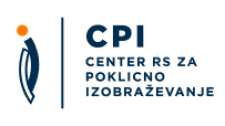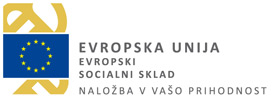Diplomirani tekstilni oblikovalec (vs)/diplomirana tekstilna oblikovalka (vs)
Selected qualifications
| Name of qualification | Name of qualification: Diplomirani tekstilni oblikovalec (vs)/diplomirana tekstilna oblikovalka (vs)Add to comparison |
|---|---|
| Translated title (no legal status) | Translated title: Bachelor of Applied Science in textile design |
| Type of qualification | Type of qualification: Professional bachelor's degree |
| Category of qualification | Category of qualification: Educational Qualification |
| Type of education | Type of education: Professional bachelor's education |
| Duration |
Duration of education:
3 years
|
| Credits | Credits: 180 credits |
| Admission requirements |
Entry conditions:
|
| ISCED field |
Field:
Engineering, manufacturing and construction
|
| ISCED subfield | subfield: textiles (clothes, footwear and leather) |
| Qualification level |
SQF Level:
SQF 7 |
The qualification holder will be able to:
(general competences)
- demonstrate understanding of and provide technical background to practical problems relating to the interdependence of technique and art, i.e. the engineering design of textile products and the introduction of modern technologies in practice,
- design (plan, construct) textile forms in the sense of appropriate design, manufacture, quality and price in order to achieve greater innovativeness and thereby increase the competitiveness of the product/company,
- carry out an independent professional assessment,
- quickly and creatively link theories and practice through organised, professional and supervised work placement in the form of laboratory work, studio work and practical training,
- use modern information technology tools and specific professional contents,
- pursue independent and team work,
- communicate with experts and co-workers in national and international contexts,
- demonstrate a capacity for ethical reflection and a commitment to professional ethics,
(subject-specific competences)
- integrate knowledge from technical and artistic fields (knowledge from the subject fields: theory of design, artistic expression, textile materials, computing and informatics, clothing and textiles technologies, planning and constructing textiles and garments, modelling and grading garments, environmental protection, measuring techniques and waste management),
- supervise existing technological procedures of textiles and clothing manufacture and modernise them,
- work autonomously, innovatively and creatively on technological projects tied to the development of a new product or the modernisation of technologies,
- demonstrate understanding of the history of industrial, graphic and one-off design, design concepts and design activities in the context of the development of society, culture, aesthetics, art, function and technology,
- demonstrate familiarity with and understanding of the planning and realisation of design projects with 2D and 3D graphics tools and familiarity with the bases of freehand drawing,
- demonstrate familiarity with and understanding of the planning of textile and clothing design (concepts, sketches, idea books, colour charts, material charts, collections, fashion stories, etc.) and visual studies (studies of space, form, planes, shapes, typography, colour, texture, composition, rhythms, balance, etc.),
- demonstrate familiarity with and understanding of the structure and properties of fibres and the relationship between the properties of fibres and their use,
- demonstrate familiarity with and understanding of the technological procedures of making yarns, threads, woven fabrics, knitting yarns, knitted fabrics and unwoven textiles and understanding of the influence of the technological phases of manufacture on the properties of linear and flat textiles,
- demonstrate familiarity with and understanding of the structure of yarns, woven fabrics, knitting yarns and unwoven textiles, and familiarity with the influence of the structure of textiles on their functional characteristics and properties,
- demonstrate familiarity with the theory of textiles finishing (bleaching, dyeing, refining, printing) and environmental requirements regarding finishing processes,
- demonstrate familiarity with and understanding of textile care and hygiene and the issue of waste water from laundries and dry cleaners,
- demonstrate familiarity with and understanding of the use of computer tools and technologies in professional work,
- demonstrate understanding of the concept of total quality management and standardisation in the textile and clothing industry,
- demonstrate familiarity with and understanding of the construction, grading and modelling of clothes for different purposes of use,
- demonstrate familiarity with and understanding of ready-to-wear processes in clothing manufacture and management of material in order to achieve a high-quality product,
- identify, monitor and evaluate costs incurred in the production system,
- demonstrate familiarity with and understanding of advanced textile materials and technologies, nanomaterials, technical textiles (in the construction industry, transport, medicine, etc.).
Students' knowledge is assessed by means of practical exercises and seminar papers, and also via products, projects, performances, services, etc. and by examinations. Examination performance is graded as follows: 10 (excellent); 9 (very good: above-average knowledge but with some mistakes); 8 (very good: solid results); 7 (good); 6 (adequate: knowledge satisfies minimum criteria); 5–1 (inadequate). In order to pass an examination, a candidate must achieve a grade between adequate (6) and excellent (10).
In order to progress to the second year, students must have passed first-year examinations totalling at least 45 ECTS credits; in order to progress to the third year, students must have passed all first-year examinations (60 ECTS credits) and second-year examinations totalling at least 40 ECTS credits.
Diplomirani tekstilni oblikovalec (vs)/diplomirana tekstilna oblikovalka (vs)
SQF 7
EQF 6
The Career path tab shows the possible career path within the selected qualification area, which is not the only one and is not mandatory. The actual transition between qualifications, which is determined by law, is defined in the Transition tab.
SQF 8 / EQF 7
Second-cycle master's study programmes (SQF level 8)
In order to complete the programme, students must complete all course units prescribed by the study programme (examinations in all compulsory subjects, selected elective subjects, practical training and bachelor's thesis), for a total of at least 180 ECTS credits.
Faculty of Mechanical Engineering, University of Maribor
URL
Awarding body URL:Upcoming event
International Conference: 10 years of Slovenian Qualifications Framework
International Conference: 10 years of Slovenian Qualifications Framework Brdo Congress Centre, Predoslje 39, 4000...
© Center RS za poklicno izobraževanje, 2018. All rights reserved
Sitemap General legal notice Cookie Policy Production: ENKI






